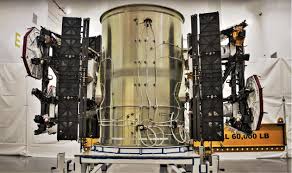
Breaking News
 Battleborn Batteries Responds! Their Overheating Device is a "Feature" not a "Problem
Battleborn Batteries Responds! Their Overheating Device is a "Feature" not a "Problem
 Actor Liam Neeson Outs Himself as MAHA After Narrating Pro-RFK Jr. Documentary Slamming...
Actor Liam Neeson Outs Himself as MAHA After Narrating Pro-RFK Jr. Documentary Slamming...
 Kyle Rittenhouse announced on social media Wednesday that he has tied the knot.
Kyle Rittenhouse announced on social media Wednesday that he has tied the knot.
 JUST IN: President Trump Grants Tina Peters Pardon
JUST IN: President Trump Grants Tina Peters Pardon
Top Tech News
 Build a Greenhouse HEATER that Lasts 10-15 DAYS!
Build a Greenhouse HEATER that Lasts 10-15 DAYS!
 Look at the genius idea he came up with using this tank that nobody wanted
Look at the genius idea he came up with using this tank that nobody wanted
 Latest Comet 3I Atlas Anomolies Like the Impossible 600,000 Mile Long Sunward Tail
Latest Comet 3I Atlas Anomolies Like the Impossible 600,000 Mile Long Sunward Tail
 Tesla Just Opened Its Biggest Supercharger Station Ever--And It's Powered By Solar And Batteries
Tesla Just Opened Its Biggest Supercharger Station Ever--And It's Powered By Solar And Batteries
 Your body already knows how to regrow limbs. We just haven't figured out how to turn it on yet.
Your body already knows how to regrow limbs. We just haven't figured out how to turn it on yet.
 We've wiretapped the gut-brain hotline to decode signals driving disease
We've wiretapped the gut-brain hotline to decode signals driving disease
 3D-printable concrete alternative hardens in three days, not four weeks
3D-printable concrete alternative hardens in three days, not four weeks
 Could satellite-beaming planes and airships make SpaceX's Starlink obsolete?
Could satellite-beaming planes and airships make SpaceX's Starlink obsolete?
SpaceX Ramping Up to Production of Starlink Satellites

SpaceX filed with the FCC to modify its Ku/Ka-band NGSO license to relocate satellites previously authorized to operate at a lower altitude of 550 km and to make other changes. Here is a link to SpaceX's 83 page technical report with its filing. The first generation of SpaceX Starlink satellites will have a simplified design for faster development and deployment. There will be continuous improvement and addition of features in subsequent generations. Initial deployment of 1,584 satellites operating at 550 km with 25 degrees minimum earth station elevation angle. Insertion altitude for the modified satellites will be 300-350 km (depending on solar activity). This will require less fuel for orbit raising. Atmospheric drag at 550 km is significantly higher but the new design reduces Hall-effect electric propulsion work by 50%. Operating at lower altitude increases reliability by reducing radiation intensity and reduces collision chance in congested 550 – 1,150 km LEO orbits. Satellites will re-enter atmosphere ≈6 months after end of mission. 550 kilometer altitude is a self-cleaning orbit. Debris lifetime is days or weeks. The longest decay time of failed spacecraft is about 5 years.

 First totally synthetic human brain model has been realized
First totally synthetic human brain model has been realized Mach-23 potato gun to shoot satellites into space
Mach-23 potato gun to shoot satellites into space

